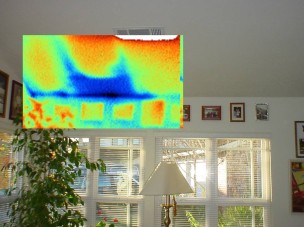Here we go again. over a million people are without power due to ice storms across the Midwest stretching down into Texas. Ice storms are a huge problem for buildings constructed in areas where they are not common.
One of the things that is happening is warmer temperatures in the outer atmosphere mean there is more moisture. When this moisture condenses it begins to fall as rain. If surface conditions are below freezing, the rain drops freeze and become ice. When upper atmosphere temperatures are cold the water falls as snow not rain. Snow is less damaging since it weighs about 1/10th as much as ice.
In addition to the power outages – we should anticipate an increase in building roof collapses. Steeper sloped roofs are better equipped to deal with this extreme weather where at least some of the ice will generally slide off. Flat roofs tend to accumulate the ice and are more likely to collapse from the load.
Some areas have been reported to already have about 6 inches of ice with another 6 inches potentially falling in the next 24 hours. Twelve inches of ice on a roof weighs about 60 pounds. That is a huge amount of weight for a roof since many roofs in areas that are not commonly exposed to the weight from ice and snow have been built to hold a minimum of twenty pounds.
We should also anticipate problems with frozen plumbing and ice dams.
For more information about these topics type the following key words into the search engine for this site (right hand column) do one search at a time: ice dam, plumbing, thermal imaging, roof, can light, frozen.
If you need help with damage – the IICRC is the place to go for a referral to a specialist in these types of problems. The following is from their web-site:
The IICRC is a nationally accredited, non-profit certification body that works to protect consumers from deceptive and unreliable companies in the cleaning, restoration and inspection industry. IICRC-Certified Firms and Technicians must meet the highest industry standards to maintain their good standing.
IICRC offers water and flood damage tips at http://www.certifiedcleaners.org/ts_tips_advice.shtml you can use their directory search to help find a certified firm or call 1-800-835-4624.
John Banta is the author of Extreme Weather Hits Home: Protecting Our Buildings from Climate Change.

